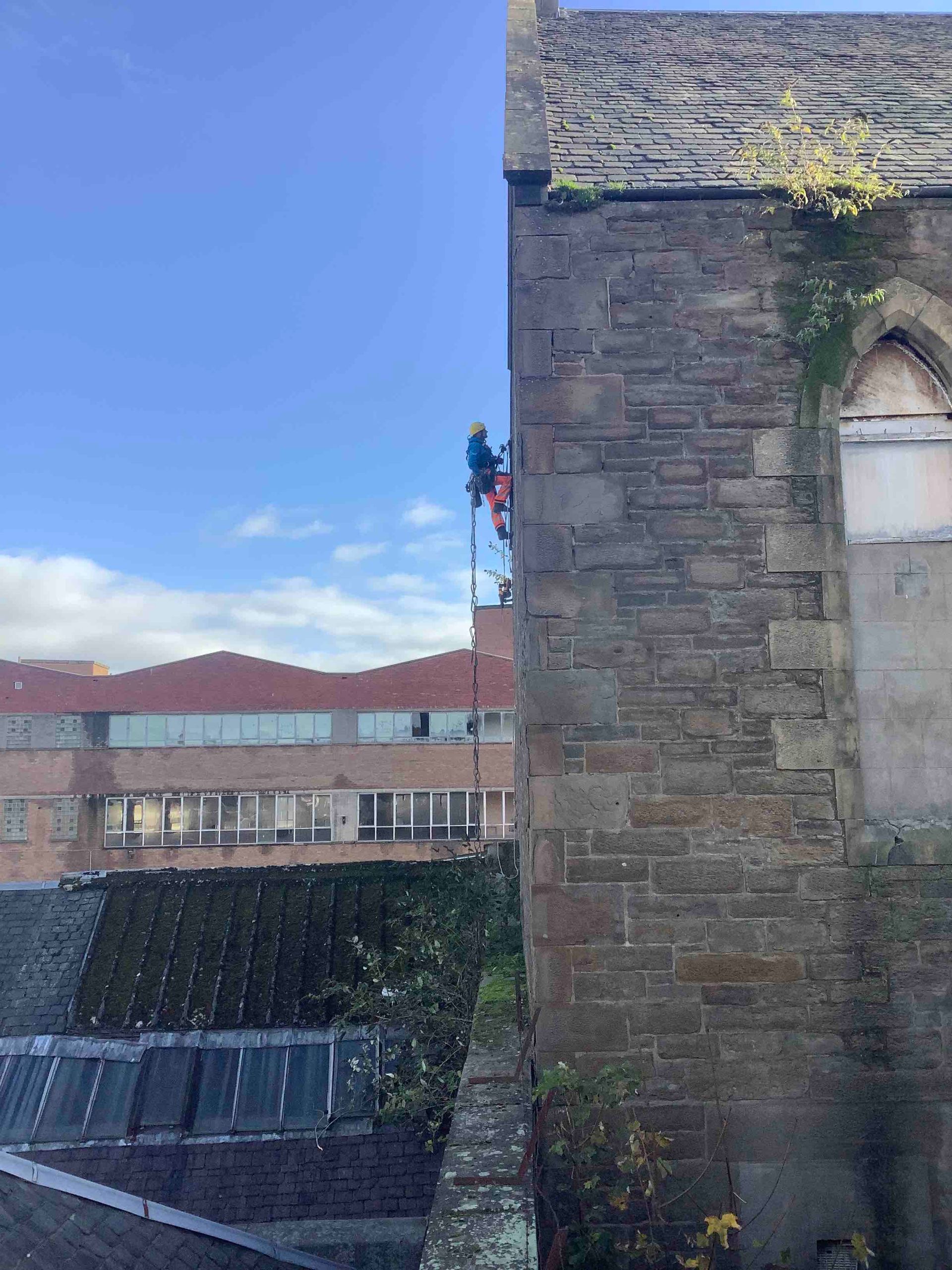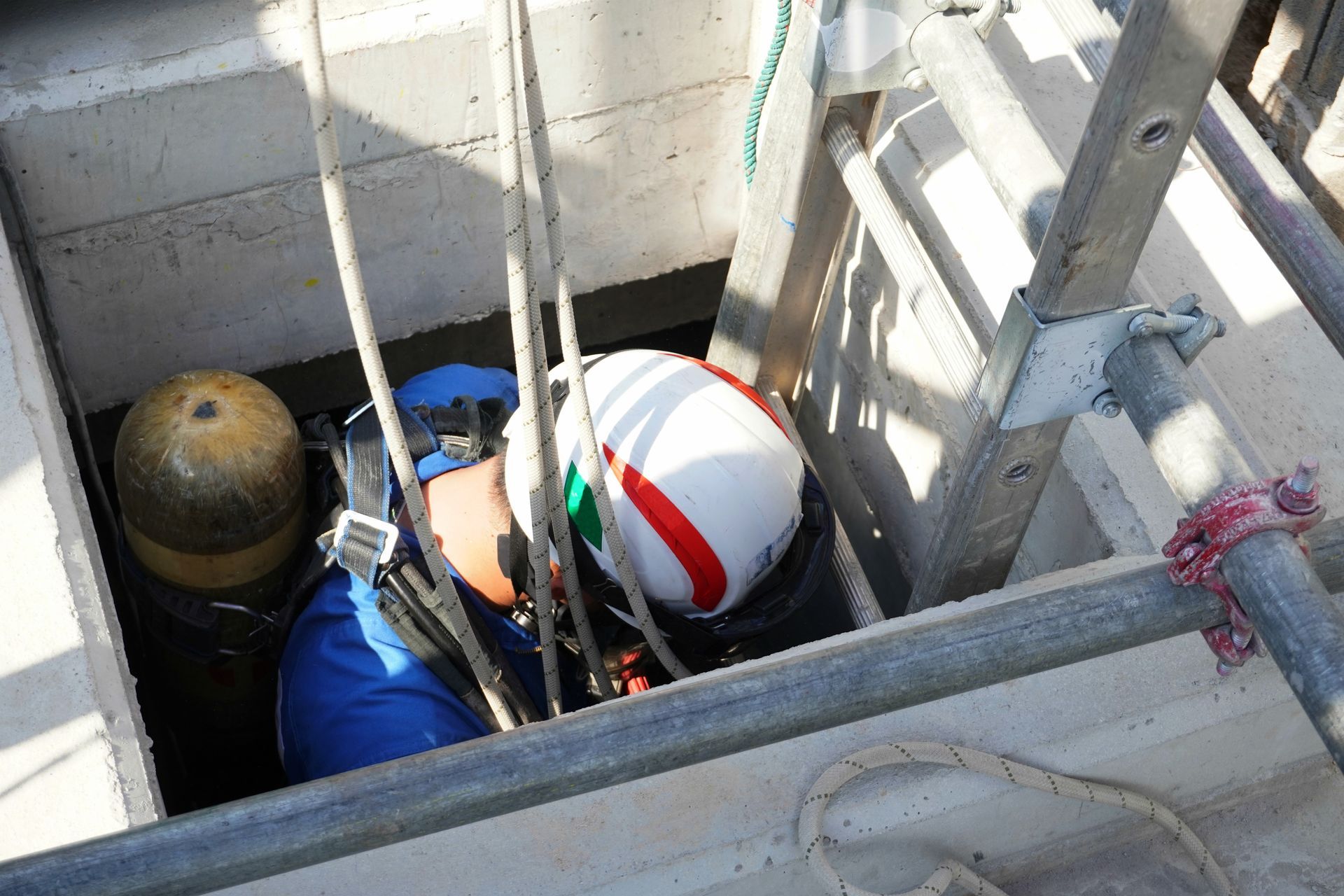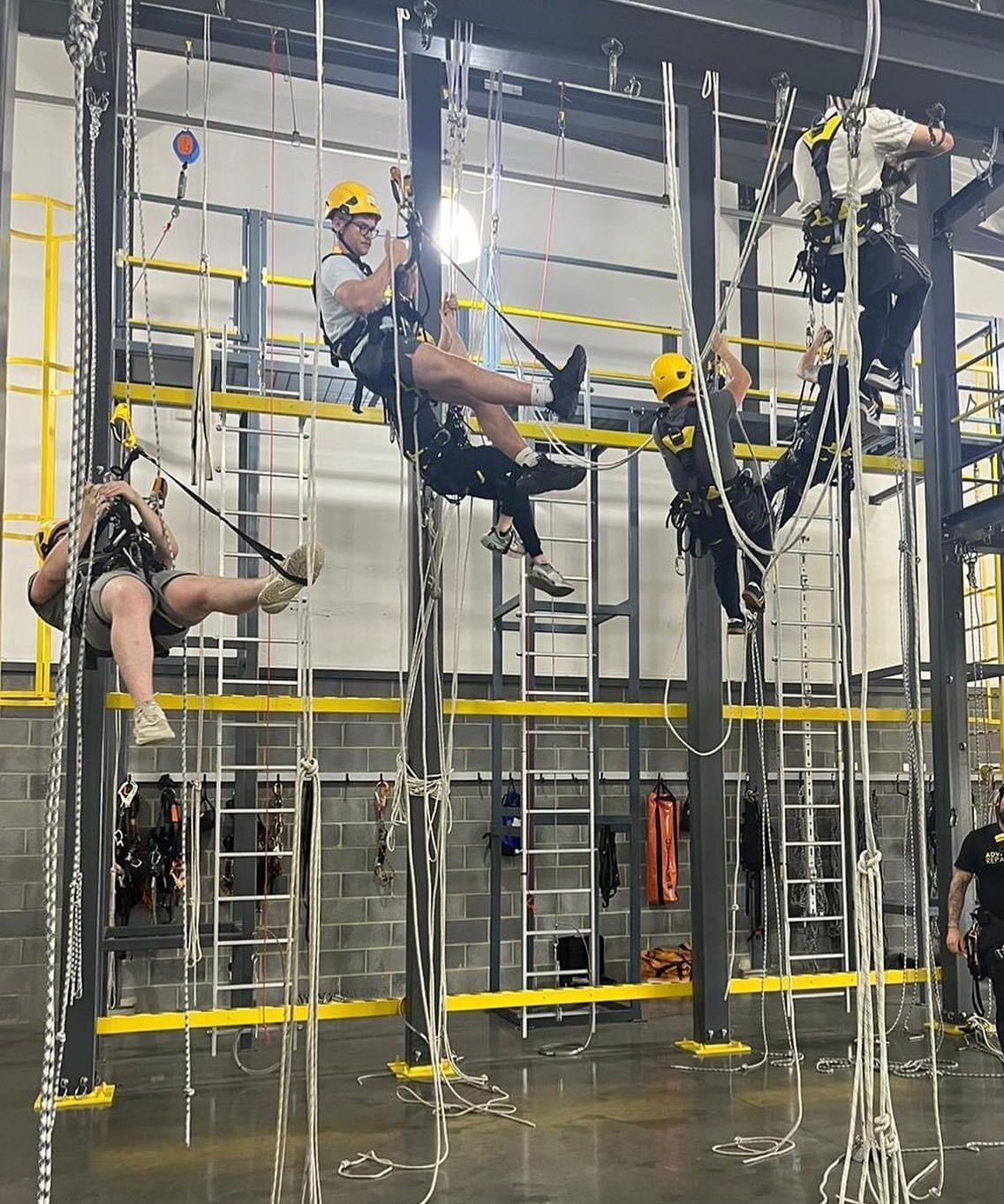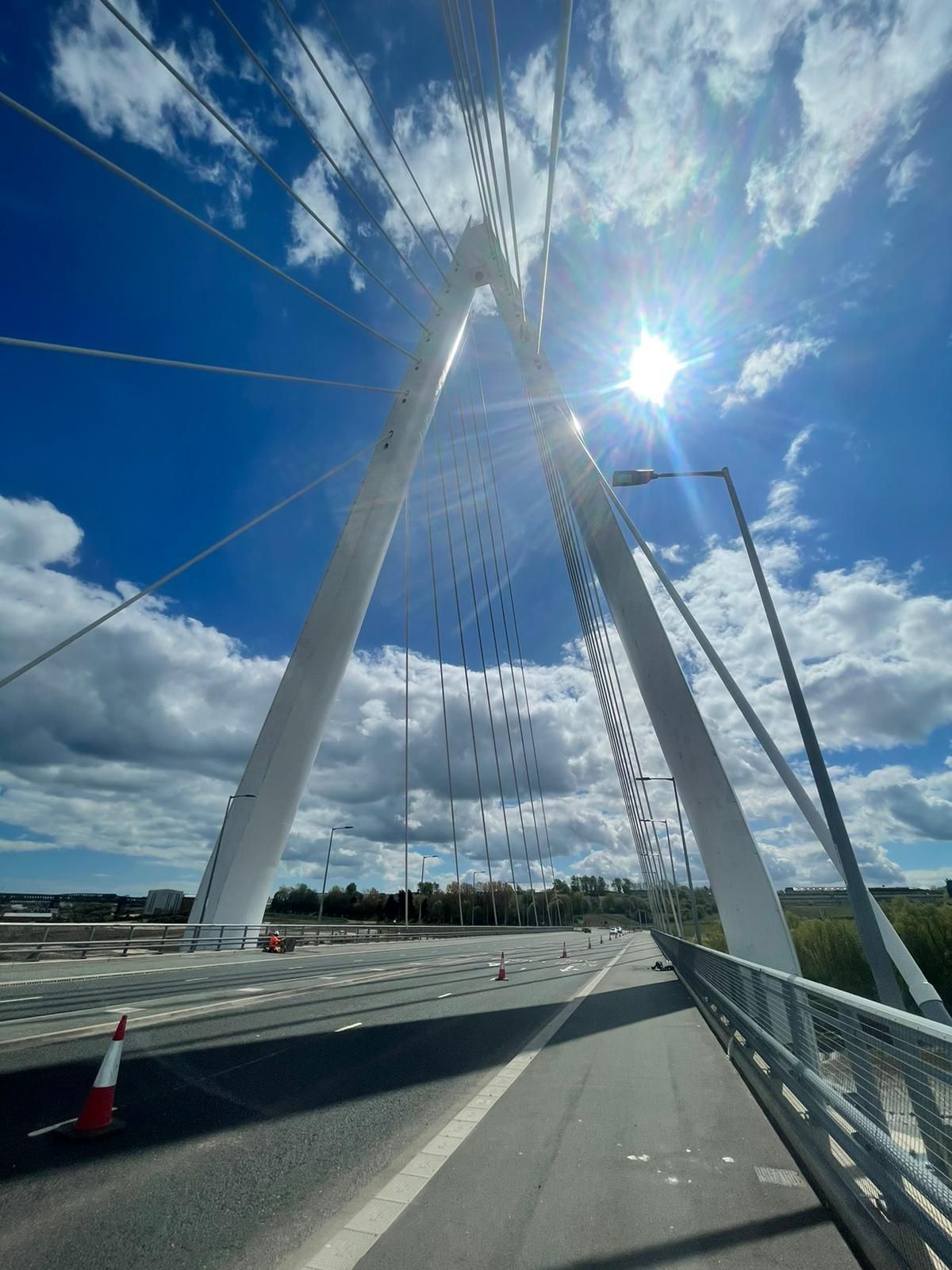Steeplejacks

The Life and Work of a Steeplejack: A Career High Above the Rest
When you think of dangerous, high-risk professions, you might picture firemen, deep-sea divers, or even stunt performers. But one profession that doesn’t always get the spotlight yet involves significant danger and skill is that of the steeplejack. This job requires a unique blend of expertise, bravery, and agility to perform tasks at dizzying heights. From repairing church spires to restoring industrial chimneys, the work of a steeplejack is as specialised as it is essential.
In this blog post, we’ll take a closer look at the history, skills, and modern-day challenges faced by steeplejacks. Whether you’re considering this career or simply curious about it, there’s plenty to discover about the world of working on tall structures across Ireland.
What is a Steeplejack?
A steeplejack is a skilled tradesperson who works at great heights to maintain, repair, or restore tall structures such as chimneys, church steeples, towers, and other high-rise buildings. The term ‘steeplejack’ originated from the traditional role of workers who maintained the steeples on churches in the UK. These workers were often called upon to carry out repairs, clean gutters, or replace roofing materials high above the ground, tasks that would be impossible for ordinary tradespeople without specialised equipment and skills to back it up.
Although the profession’s roots are in the maintenance of churches, steeplejacks today are just as likely to be found on the sides of industrial buildings or even on the towers of telecommunications companies.
A Brief History of Steeplejacks
The history of the steeplejack profession goes hand-in-hand with the growth of industrial Britain. During the 19th century, rapid urbanisation and industrialisation led to the construction of larger, more intricate structures, many of which required regular maintenance at considerable height. As the industrial revolution took hold, the need for skilled workers to access tall buildings and structures grew.
Steeplejacks would be called upon to restore church spires, repair large industrial chimneys (a common feature in the smokestack cities of the industrial revolution), or work on lighthouses and such like. The introduction of modern safety equipment, such as ropes, harnesses, and scaffolding, revolutionised the profession, allowing steeplejacks to work more safely and efficiently.
However, the profession remained largely unchanged in terms of the skill set required. The core tasks of climbing, repairing, and maintaining tall structures, often without a safety net, still hold true today although the term rope access has become synonymous and interchangeable with all forms of industrial abseiling.
The Skills and Tools of a Steeplejack
Becoming a steeplejack is no easy feat. It requires a combination of physical strength, mental resilience, and technical skill. The training is rigorous, and steeplejacks must be well-versed in a range of trades, including masonry, roofing, and even steelwork. But more importantly, they need to have a head for heights and a deep understanding of safety procedures including a good understanding of the Working at Height Regulations.
Physical and Mental Demands
First and foremost, the steeplejack profession is physically demanding. Workers are often required to scale tall structures using ropes, ladders, or scaffolding. This requires not only physical strength but also a steady hand and an ability to work in precarious conditions. Steeplejacks must be able to think quickly and remain calm under pressure, as working at such heights can be mentally taxing, with an attitude to "what if's".
Training and Apprenticeships
To become a fully qualified steeplejack, an individual typically undergoes a lengthy apprenticeship that may last several years. This apprenticeship combines on-the-job training with classroom learning. Aspiring steeplejacks are taught various aspects of the job, including climbing techniques, the use of specialist equipment, and how to assess the condition of structures.
One key component of steeplejack training is learning the intricacies of rope access work and rigging. This involves using ropes to scale structures, rappel down them, and carry out repairs or installations from a hanging position. With this knowledge, a steeplejack can access hard-to-reach places where scaffolding would be impractical, too costly, and time consuming.
Tools of the Trade
Steeplejacks make use of a variety of tools to perform their work. The most important tool is, of course, their ropes and harnesses, which are designed to keep them secure while working at extreme heights. The ropes are often supplemented with pulleys and anchors to provide additional safety and stability. In addition to these, steeplejacks might use specialised tools for bricklaying, roofing, or even electrical work, depending on the task at hand.
Another tool that is crucial to the job is the climbing spike. These spikes, which are attached to the steeplejack’s boots, provide better grip and stability when climbing towers, spires, or chimneys. Though more modern techniques have replaced some traditional methods, many steeplejacks still use climbing spikes for certain tasks, as they provide a superior level of control when scaling steep or irregular surfaces.
Working at Great Heights
One of the most distinct features of a steeplejack’s work is, of course, the extreme height at which they operate. Whether it’s the spire of a cathedral or the chimney of an industrial factory, steeplejacks are used to working at heights that would make most people dizzy.
The risks involved in such work are significant, but advancements in safety equipment and procedures have made the profession somewhat safer over the years. Nowadays, steeplejacks make use of a variety of safety measures, including helmets, harnesses, and two-way radios. They also work in teams to ensure that help is on hand should anything go wrong, and all team members are usually first aid trained.
Modern-Day Challenges
While the basic principles of being a steeplejack have remained the same for generations, modern-day challenges have altered the way these workers perform their jobs.
Health and Safety Regulations
As with any profession involving significant risk, health and safety regulations have evolved significantly over the years. Today, steeplejacks must adhere to strict safety standards to ensure their own safety and the safety of those working around them. This includes the mandatory use of personal protective equipment (PPE), such as helmets, gloves, and steel-toe boots. Additionally, workers must undergo regular training to ensure that they remain up-to-date with the latest safety practices.
Technological Advancements
Technology has also played a significant role in modern steeplejack work. Drones, for example, are now used to inspect tall structures before a steeplejack is sent in to do the repairs. These drones can provide a comprehensive view of the structure, allowing steeplejacks to better plan their work and identify potential hazards in advance.
Furthermore, improvements in climbing equipment have made the job safer and more efficient. Rope access techniques are more advanced than ever, providing workers with better control and more secure methods of scaling tall buildings.
The Decline of Traditional Steeplejack Work
In the past, the demand for steeplejack services was almost constant, particularly in urban areas where tall industrial chimneys were ubiquitous. Today, however, the decline of heavy industry and the rise of more modern construction techniques have led to a decrease in the number of steeplejack jobs. Additionally, many of the tasks that once required a steeplejack—such as repairing chimneys—are now done using cranes or other machinery, further reducing the need for traditional high-altitude workers.
Despite these challenges, however, the work of steeplejacks remains essential. Churches, historic buildings, and certain industrial sites still require the unique skill set of a steeplejack, and the demand for professionals in the field remains strong.
Steeplejacks in the Modern World
While the profession of the steeplejack may not be as widely known as other high-risk careers, it is still an essential one. In a world that continues to build higher and higher structures, the need for steeplejacks will never fully disappear, as it evolves.
In recent years, steeplejacks have expanded their services to include tasks such as cleaning and maintaining telecommunications towers, installing lighting and other features on tall buildings, and even working on the upkeep of wind turbines. These modern additions ensure that the steeplejack profession will remain relevant for years to come.
The role of a steeplejack is one that blends physical prowess, technical skill, and a love for working in high places. Though the profession has evolved over the centuries, the fundamental tasks of scaling and maintaining tall structures remain the same. Whether working on a historic church or a modern-day skyscraper, steeplejacks continue to play an essential role in maintaining the integrity of the buildings that make up our skyline.
Though the challenges have changed—thanks to advances in safety equipment, technology, and changing industry demands—the profession of the steeplejack is likely to endure for as long as there are tall structures in need of care. So, the next time you look up at a towering church spire, a looming chimney, or a sleek telecom tower, take a moment to appreciate the steeplejack who helps keep it standing tall and proud.
Why Choose Dangle's Academy
Here at Dangle, we pride ourselves on offering a wide range of professional and comprehensive inspection, access, coatings, and composite (IACC) industrial services and training courses to cater to the needs of both the private and public sectors. Our dedication to providing high-quality work at height solutions and training has helped us establish a strong reputation in the industry.
With a team of highly skilled and experienced professionals, we are committed to delivering exceptional results that not only meet but exceed our clients' expectations. Our on-site working at height services are designed to minimise maintenance costs in the long and short-term, allowing our clients to save on valuable resources.
Located in Belfast, Northern Ireland, our headquarters serve as the centre of our operations across Ireland. However, we also have a Dangle office based in Scotland, ensuring that we can extend our services to a wider clientele across the United Kingdom. No matter where you are located, our team is always ready to assist you with your industrial maintenance or training needs.
If you would like to learn more about how our dedicated team can help you, we encourage you to get in touch with us today. Our friendly and professional staff are always available to provide you with the information and support you require.
Contact us now to discover the Dangle difference and let us be your trusted partner in meeting your industrial service and training needs today.
We'd Love a Share...
You might also like


